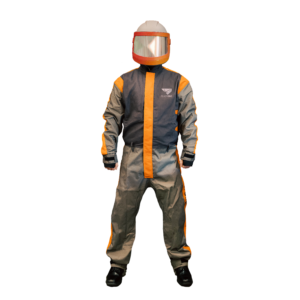The Four Fastest Curing Methods
1. Dry the painted object in a heat-controlled environment
Although most painting bays in shop environments are very large and expensive to heat, there are two possibilities for heating. The first is to consider installing a paint booth to better contain and control the environment and once you finish painting, raise booth temperatures to 150-200ºF. A secondary option is to apply localized heat to the coated product.
2. Facilitate the movement of high velocity air over the painted surface
Just like wet clothes that dry quickly when it’s windy outside, paint/industrial coatings also cure faster when subjected to high velocity air.
The process of drying paint requires that the solvents evaporate. As evaporation occurs, a thin layer of the gaseous solvent floats atop the coated surface. This thin layer (a few millimeters/thous) forms an insulation barrier between the surface and the outer atmosphere. This thin barrier inhibits the evaporation of more paint solvents by laying atop the curing paint, exerting a downward pressure and preventing more evaporation from occurring. In time, environmental conditions wisp this insulating layer away, finally allowing more gaseous solvents to float upward – curing the painted surface through this natural, repetitive process until the coating is fully dry. By simply applying high velocity air, the whole process speeds up; the evaporation barriers are wisped away more quickly which allow more solvents to evaporate and the entire curing process is realized much faster than if the air was still.
Using high velocity air whilst painting creates obvious problems and thus a great solution is to employ an ‘Aquatech’ style fast drying solution after the painting is completed. This directs fast moving air over the surface of the finished product. The Aquatech system can be fitted to both paint booths and large painting bays.
3. Avoid thinning the paint
If you find yourself with a thick coating that requires thinning get it to atomise, here are the best recommendations:
- Instead of thinning the paint, use a plural component pump for standard epoxies. This will handle the thickness problem.
- A common issue with paint not atomizing is that it’s too cold when it leaves the spray tip. We recommend using an in-line paint heater to heat the paint once it has left the pump. This will increase atomization.
4. Warm the product before applying the coating
A common problem for contractors is they blast outside and then bring the product inside to paint. If outside temperatures are cold, the blasted steel will be cold and curing speeds will be lowered. However, if you are able to blast inside, this will give the steel a chance to warm up before the coating is applied. Alternatively, if you can house products indoors, blast them outside and quickly return them inside for painting – the steel will be warmer and the curing will be faster.
 My Account
My Account



